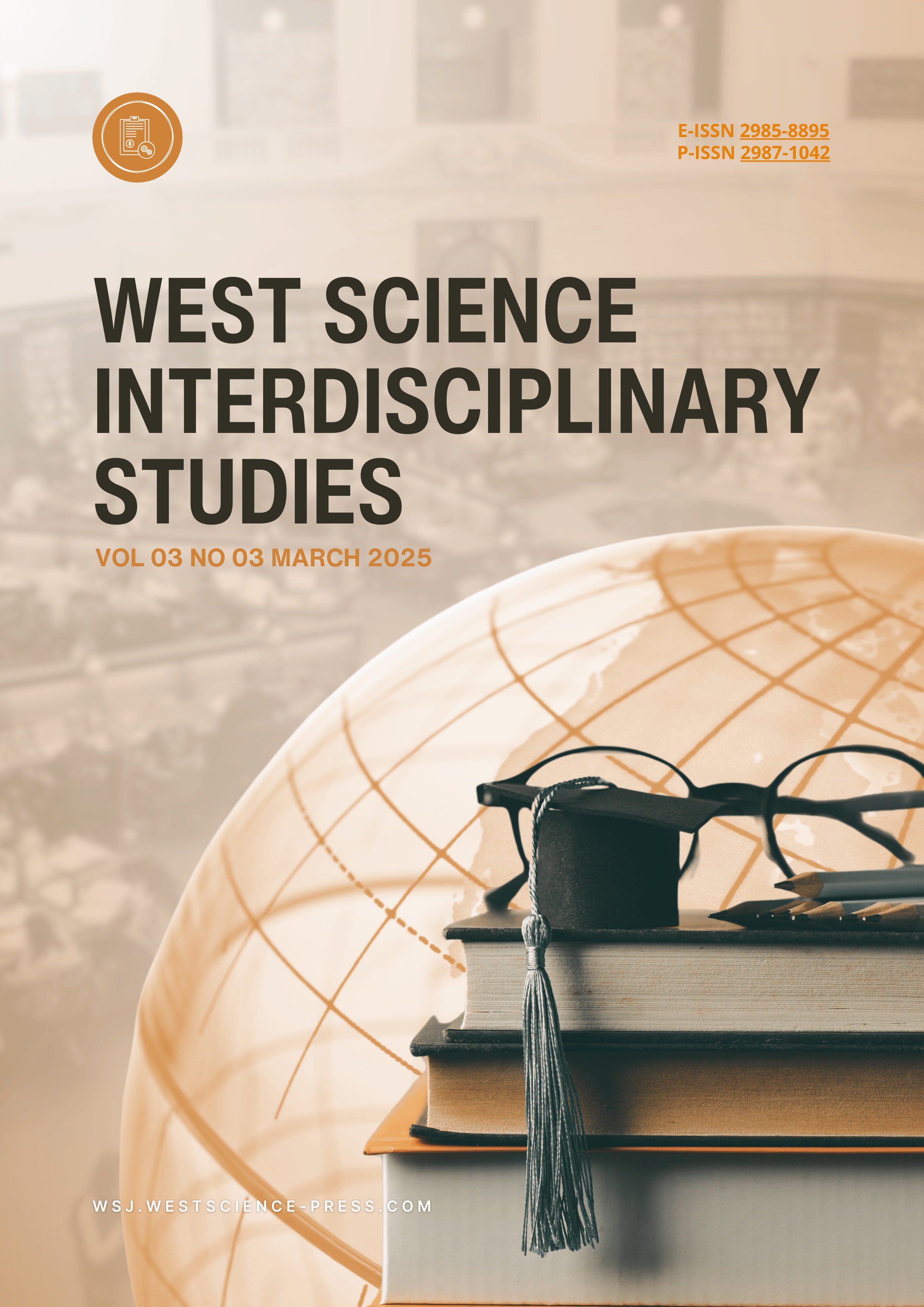The Influence of Soft Skills and Networking on Business Innovation and Startup Sustainability in Indonesia's Creative Industries
DOI:
https://doi.org/10.58812/wsis.v3i03.1777Keywords:
Soft Skills, Networking, Business Innovation, Startup Sustainability, Creative IndustryAbstract
The creative industry in Indonesia is a rapidly growing sector that requires continuous innovation and sustainable business practices. This study examines the influence of soft skills and networking on business innovation and startup sustainability using a quantitative approach with Structural Equation Modeling–Partial Least Squares (SEM-PLS). Data were collected from 210 respondents, and the analysis utilized a Likert scale (1-5) to measure perceptions. The findings indicate that soft skills significantly impact business innovation and startup sustainability. Networking also plays a crucial role, positively affecting both business innovation and startup sustainability. The results highlight that entrepreneurs with strong soft skills are more likely to develop innovative strategies, while networking is essential for ensuring long-term sustainability. The study provides managerial insights for entrepreneurs, policymakers, and investors, emphasizing the need for entrepreneurial training programs and networking opportunities to foster business growth in Indonesia’s creative industry.
References
[1] T. Asmoro, M. Rodoni, and M. Meirinaldi, “Factors Affecting Export Performance Indonesian Fashion Creative Industry,” in MIC 2021: Proceedings of the First Multidiscipline International Conference, MIC 2021, October 30 2021, Jakarta, Indonesia, European Alliance for Innovation, 2022, p. 262.
[2] W. Harwiki and C. Malet, “Quintuple helix and innovation on performance of SMEs within ability of SMEs as a mediator variable: A comparative study of creative industry in Indonesia and Spain,” Manag. Sci. Lett., vol. 10, no. 6, pp. 1389–1400, 2020.
[3] N. A. Rizal, “BANKING INDICATORS IN DOING START-UP FUNDING FOR CREATIVE INDUSTRY IN INDONESIA,” J. Contemp. Issues Bus. Gov., vol. 27, no. 5, pp. 2546–2553, 2021.
[4] C. L. Alayón, K. Säfsten, and G. Johansson, “Barriers and Enablers for the Adoption of Sustainable Manufacturing by Manufacturing SMEs,” Sustain., vol. 14, no. 4, pp. 1–34, 2022, doi: 10.3390/su14042364.
[5] P. P. Bachtiar, P. Vandenberg, and H. W. Sawiji, “City-Level Tech Startup Ecosystems and Talent Development in Indonesia,” Adb Briefs, vol. 4, no. 100, pp. 1–12, 2022.
[6] L. D. Mubarik, B. K. Iskamto, and K. N. Sakib, “Entrepreneurial Competencies and Success of SMEs in Changwon, South Korea,” J. Entrep. Proj. Manag., vol. 7, no. 8 SE-Articles, pp. 1–11, Jul. 2023, doi: 10.53819/81018102t5206.
[7] Sayali Thorat, Sairaj Navale, Shubham Vadje, Mayur Rasal, Prof. Dr. Khatal S. S, and Prof. Mundhe B. B., “Blockchain Deployment for Supply Chain Management in Agriculture,” Int. J. Adv. Res. Sci. Commun. Technol., vol. 2, no. 1, pp. 13–16, 2022, doi: 10.48175/ijarsct-7645.
[8] Y. M. Ginting, “Intellectual Capital investigation in achieving sustainable competitive advantages in the creative industry: Does the mediation of knowledge management system affect?,” J. Manag. Inf. Decis. Sci., vol. 23, no. 2, 2020.
[9] Z. Zhao and L. Zhang, “Design of artificial intelligence cultural creative industry based on machine learning,” Soft Comput., pp. 1–12, 2023.
[10] R. Adwiyah, C. Cintyawati, F. Firmansyah, F. Mustikawati, S. Fatimah, and V. Islami, “Boosting the performance of convection creative industry through supply chain management and brand image enhancement,” in 2nd Social and Humaniora Research Symposium (SoRes 2019), Atlantis Press, 2020, pp. 608–612.
[11] D. P. O. Prasiasa, D. A. D. S. Widari, and P. H. Susanti, “Authenticity and Commodification of Creative Industry Products in The Tourism Sector, Bali,” Mudra J. Seni Budaya, vol. 38, no. 3, 2023.
[12] A. N. Wanambisi, Entrepreneurial Networking and Growth of Small and Medium Enterprises in Kenya. ir.jkuat.ac.ke, 2022.
[13] I.-H. Su, L. Wu, and K. H. Tan, “The future of the food supply chain: A systematic literature review and research directions towards sustainability, resilience, and technology adoption,” J. Digit. Econ., vol. 2, pp. 303–316, 2023, doi: 10.1016/j.jdec.2024.03.001.
[14] G. Vial, “Understanding digital transformation,” Manag. Digit. Transform., pp. 13–66, 2021, doi: 10.4324/9781003008637-4.
[15] M. Skare, M. de las Mercedes de Obesso, and S. Ribeiro-Navarrete, “Digital transformation and European small and medium enterprises (SMEs): A comparative study using digital economy and society index data,” Int. J. Inf. Manage., vol. 68, p. 102594, 2023, doi: https://doi.org/10.1016/j.ijinfomgt.2022.102594.
[16] T. Qin, L. Wang, Y. Zhou, L. Guo, G. Jiang, and L. Zhang, “Digital technology-and-services-driven sustainable transformation of agriculture: Cases of China and the EU,” Agriculture. mdpi.com, 2022.
[17] S. Fitriana, A. S. Hasanah, and R. S. Aliyudin, “Motivasi dan Lingkungan Kerja Untuk Meningkatkan Kinerja Karyawan Hotel,” J. Innov. Manag. Account. Bus., vol. 2, no. 2, pp. 59–67, Jun. 2023, doi: 10.56916/jimab.v2i2.385.
[18] G. Zhao, M. Vazquez-Noguerol, S. Liu, and J. C. Prado-Prado, “Agri-food supply chain resilience strategies for preparing, responding, recovering, and adapting in relation to unexpected crisis: A cross-country comparative analysis from the COVID-19 pandemic,” J. Bus. Logist., vol. 45, no. 1, 2024, doi: 10.1111/jbl.12361.
[19] M. Redondo, C. Camarero, and P. van der Sijde, “Exchange of knowledge in protected environments. The case of university business incubators,” Eur. J. Innov. Manag., vol. 25, no. 3, pp. 838–859, 2022.
[20] W. Act, “Workforce Innovation and Opportunity Act (WIOA) Title I Youth Program│ XXXX XX, 2021,” Policy. content.govdelivery.com, 2021.
[21] M. Ratanavanich and P. Charoensukmongkol, “The interaction effect of goal orientation and mindfulness of entrepreneurs on firm innovation capability and its impact on firm performance,” VINE J. Inf. Knowl. Manag. Syst., 2024, doi: 10.1108/VJIKMS-06-2023-0135.
[22] T. Cherkos, M. Zegeye, S. Tilahun, and M. Avvari, “Examining significant factors in micro and small enterprises performance: case study in Amhara region, Ethiopia,” J. Ind. Eng. Int., vol. 14, no. 2, pp. 227–239, 2018, doi: 10.1007/s40092-017-0221-y.
[23] D. Basu, R. Datta, and U. Ghosh, “Softwarized network function virtualization for 5g: Challenges and opportunities,” Internet Things Secur. Smart …, 2020.
Downloads
Published
Issue
Section
License
Copyright (c) 2025 Zeanette T. Lisbet, Supriandi Supriandi, Muhamad Ammar Muhtadi

This work is licensed under a Creative Commons Attribution-ShareAlike 4.0 International License.
























 Instagram
Instagram 